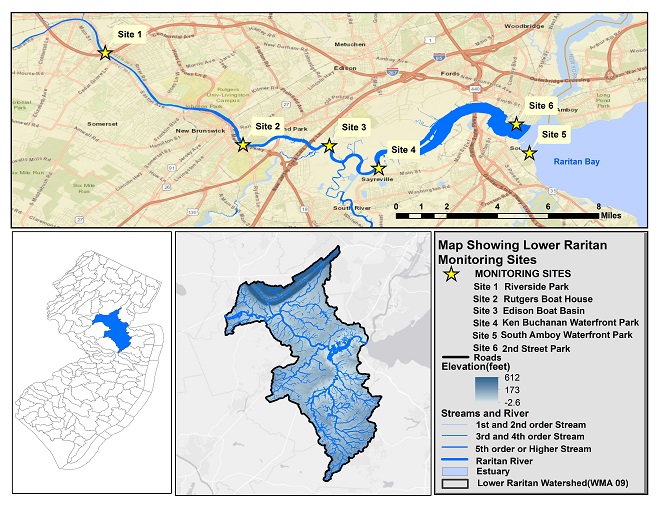Raritan Pathogens Report for 9.3.2020
Happy Labor Day Weekend Everyone!
The LRWP and Rutgers Cooperative Extension of Middlesex County monitor for Fecal Coliform and Enterococcus at six non-swimming public beach access sites along the Lower Raritan during the warmer summer months. Fecal Coliform and Enterococcus are indicators of disease-causing bacteria in our waterways.
The EPA recommends that a single Enterococcus sample be less than 110 Colony Forming Units (CFU)/100mL for primary contact. Enterococci levels are used as indicators of the possible presence of disease-causing bacteria in recreational waters. Such pathogens may pose health risks to people fishing and swimming in a water body. Sources of bacteria include Combined Sewer Overflows (CSOs), improperly functioning wastewater treatment plants, stormwater runoff, leaking septic systems, animal carcasses, and runoff from manure storage areas. Enterococci levels are often high after heavy or consistent rainfall.
Here are our pathogens results for September 3, 2020. Please note that we received over an inch of rain in our Lower Raritan monitoring areas the evening after monitoring, we expect pathogens levels to be higher than what was sampled in the morning.
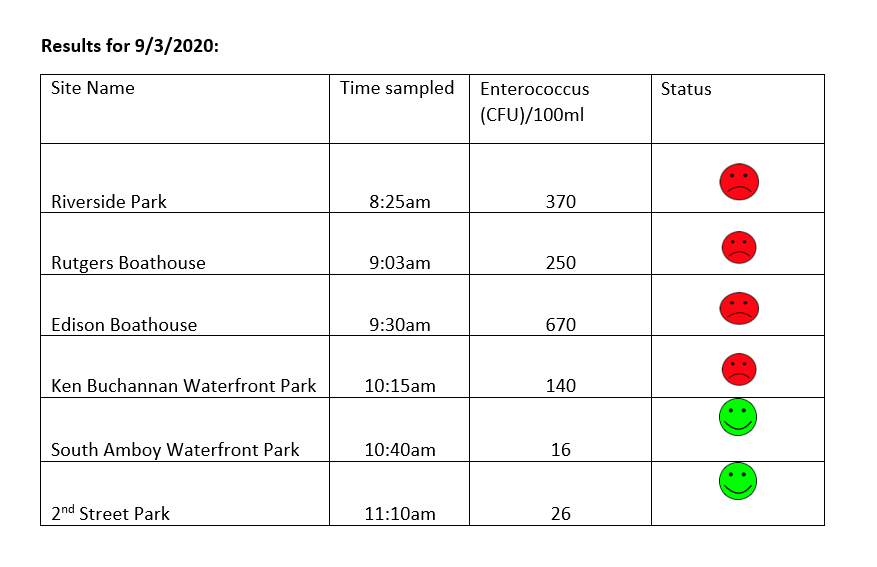
Please note that these results for August 20, 2020 are preliminary and awaiting Quality Control.
Field Notes
Another gorgeous day for pathogens monitoring! We found a few Ganesh in Piscataway – for those who celebrate Ganesh Chaturthi, we encourage you to remember the environmental message of Ganesh and please take your idols with you! Another week with lots of bunker in Edison and South Amboy and we heard folks were bringing in striper.
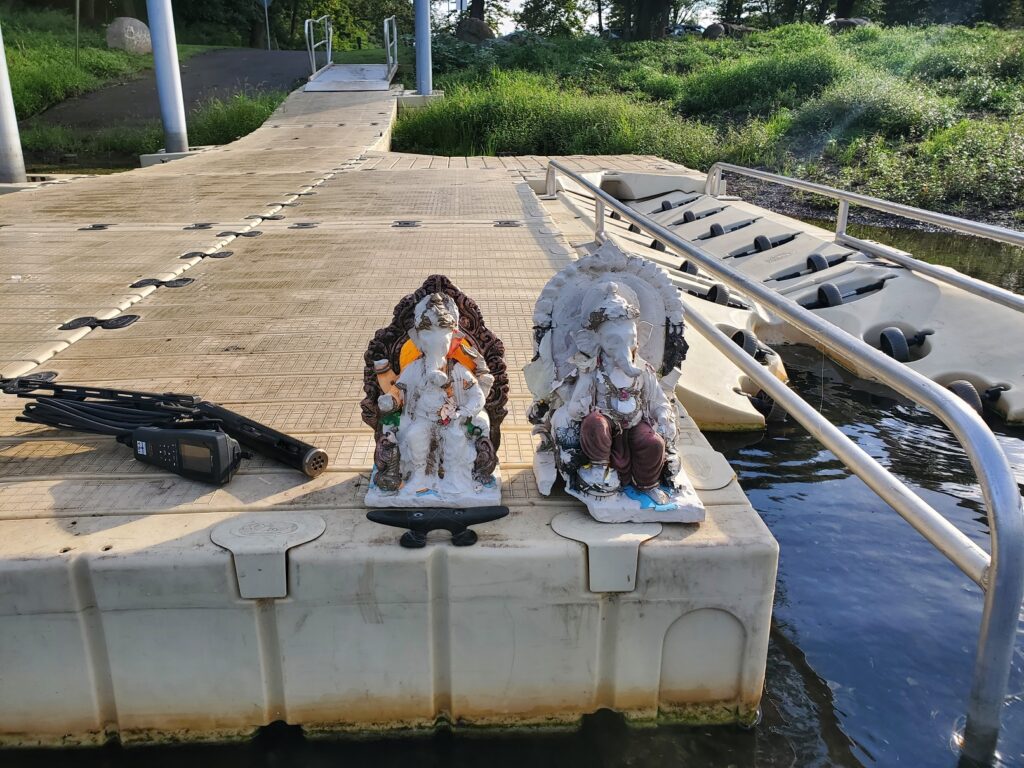
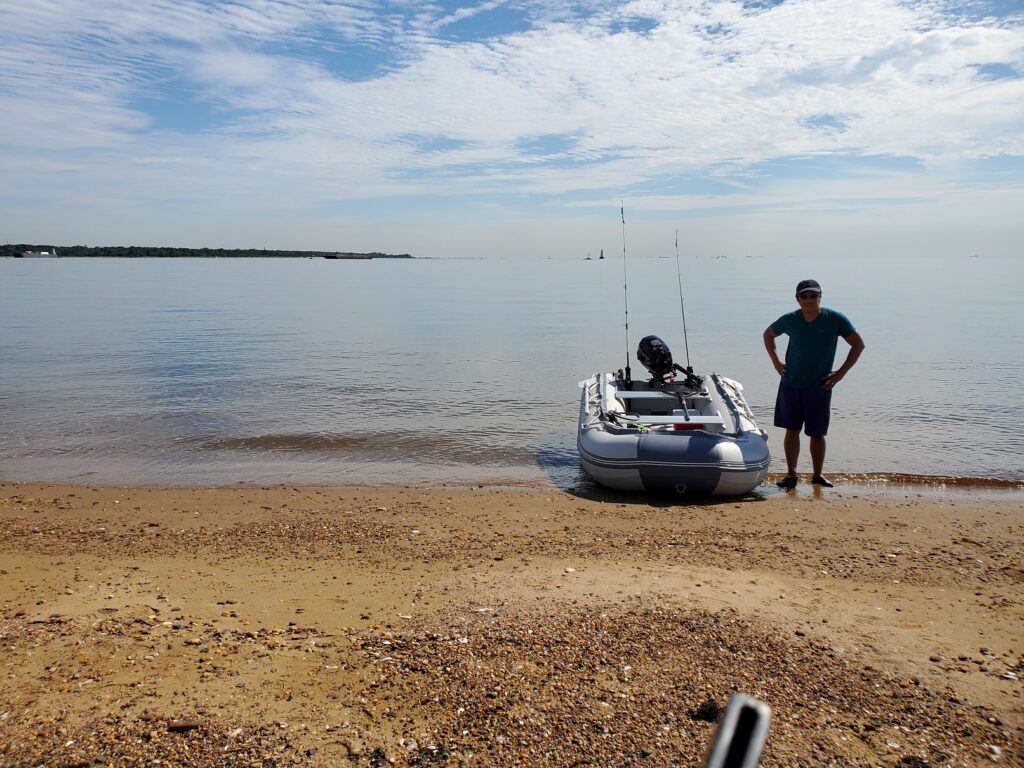
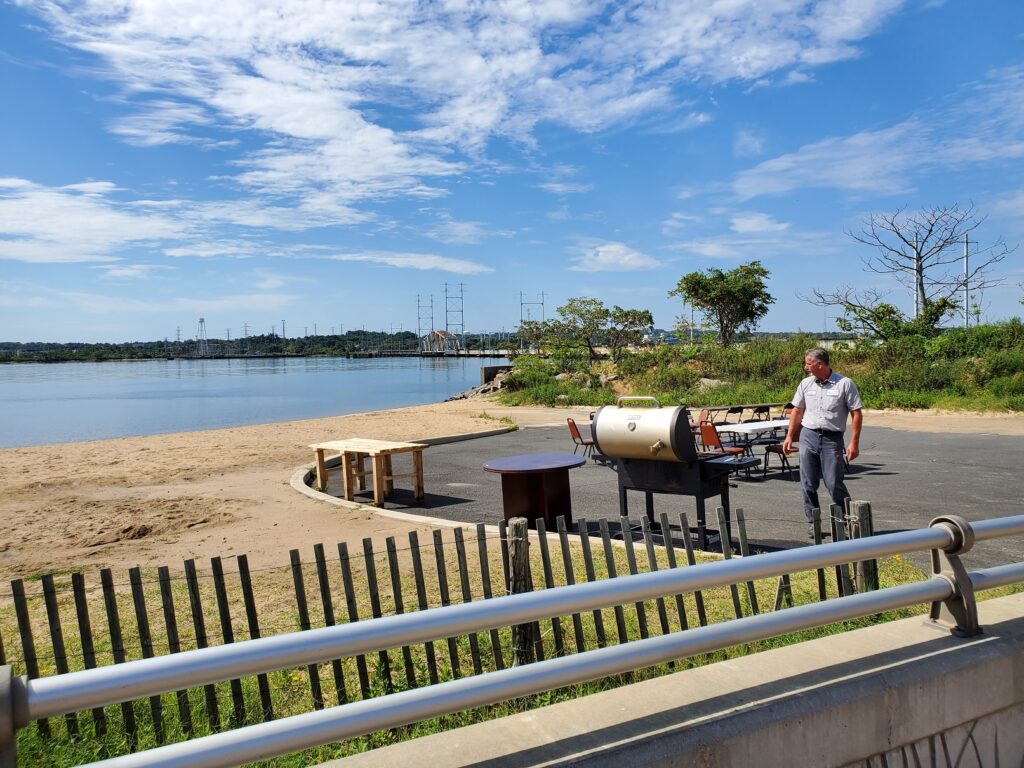
Summer 2020 Raritan Monitoring Sites
The New Jersey state Department of Environmental Protection and Middlesex County Health Departments typically monitor at sanctioned public swimming beach sites. They do not monitor the water quality for pathogens at public access non-swimming beach sites along the Raritan, despite regular use of these areas for primary contact (fishing and swimming) by members of our urban communities.
The LRWP works with in partnership with the Interstate Environmental Commission for lab analysis of our samples. We have a Quality Assurance Protocol Plan (QAPP) approved by the federal Environmental Protection Agency. We work to report our results as soon as lab analysis is completed.
